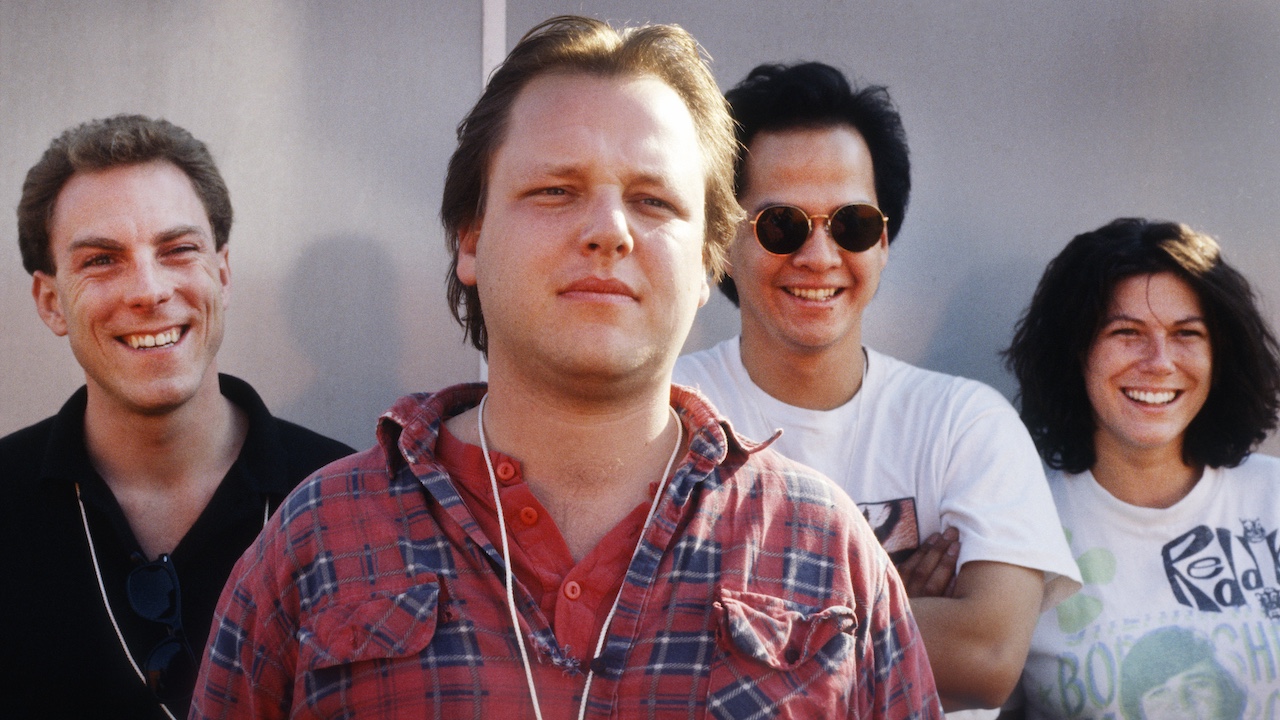“There was a small fish that was aggressively following me and poking me… it freaked me out”: the high-school scuba trip that inspired an all-time alt-rock anthem
A pesky little creature at the bottom of the ocean prompted this singer and guitarist to lose his mind

You know how it is, you’re on an overseas trip to the Caribbean with your university that your mum and dad have re-mortgaged to pay for, the teachers say you can go for a little snorkel because you’ve been on best behaviour and what should’ve been a lovely afternoon at the beach is turned into some nightmarish twist on Finding Nemo because a demented little fish that’s smaller than the size of your hand has taken umbrage at you having a paddle in its neighbourhood and is embarking on an aggressive campaign to get you back onto land.
This is the peculiar set of circumstances that gave birth to one of the most enduring alt-rock anthems of the late 80s. The besieged diver in question was a teenager by the name of Charles Thompson IV, later to reinvent himself as Black Francis, frontman of Boston grunge progenitors Pixies. When Thompson came up with a circular, four-chord riff on his acoustic not long into the band's existence, it was that dip in the ocean that he took on a trip as a student at the University Of Massachusetts that popped into his head, the pesky fish immortalised in the lines: “I was swimming in the Caribbean/Animals were hiding behind the rock/Except the little fish/Bump into me, swear he’s trying to talk to me.”
“I was swimming in clear water and there was a small fish – about four inches, not dangerous at all – that was aggressively following me and poking me,” Francis told The Guardian in 2020. “It kept doing it – it freaked me out. I was like: “I have to get away from this fucking crazy fish’.”
The singer and guitarist knew he was onto something the minute that riff, the lyric and the song’s dreamy melodic vocal began to take shape. His partner at the time told him so. “I used to write songs in my apartment’s bathroom,” he explained. “One day my ex-wife was in there doing her makeup. She dressed quite goth, so it took a while. I was in the bedroom playing this song and she stuck her head out – and she never did this with any other song, ever – and said: “That’s a good one, finish it.”
He took her advice, and Where Is My Mind became one of the standouts on the Pixies’ Steve Albini-produced debut Surfer Rosa. Francis thought the fact the band were so wet behind the ears at the time was part of the reason it came together so expertly.
“We didn’t know what we were doing but we did it well,” he said. “There’s something about the major to minor chord shift in the song that resonates along with the universal sentiment of the title. Sonically, if you had to pick a song to sum up our band this would be it. It’s emblematic of what we do with that loud/quiet dynamic.”
Part of Where Is My Mind's magic is how it sums up the deceptively simple chemistry at the heart of the best Pixies songs, each member adding something to the blueprint and taking the song to the next level, whether it’s Joey Santiago’s chiming, hooky guitar part, or Kim Deal’s hauntingly atmospheric backing vocal or the rooted earthiness of the rhythm section.
The latest news, features and interviews direct to your inbox, from the global home of alternative music.
That’s why, you imagine, that Francis has described it as the “quintessential Pixies song”. Santiago reminisced to NME about the first time he heard it. “Charles called me up and said, ‘I’ve got this thing’,” he said. “I went over there and he showed me the chord progression and the showed me the chorus and I was like, ‘This is awesome’. I picked up an extra guitar and that riff that I play, it came [instantly], and we were like, ‘OK, we’re keeping that, I’m not overthinking this thing’.
A big part of Where Is My Mind’s belated surge in popularity - the song wasn't even released as a single originally - is down to its appearance in David Fincher’s adaptation of Fight Club, the track's warm acoustic sway offering a euphoric counterpoint to the film’s chaotic conclusion. Santiago thinks it worked so well because of how it was so at odds with the film’s electronic score, by pioneering duo The Dust Brothers.
“The music by the Dust Brothers, it’s all this mechanical stuff and hard rhythms,” the guitarist offered. “And then when the poop is hitting the fan, the buildings start collapsing, you would think it’s going to be [something like that], but what’s the first thing you hear, acoustic guitar, what a juxtapose, I’m getting goosebumps right now. It was just creepy awesome.”
Which, funnily enough, is exactly the sort of vibe that prompted Black Francis to write it in the first place. After all, what is a tiny fish that’s following you around at the bottom of the ocean, aggressively following you around like a nautical Scrappy Doo despite the fact it’s about 100 times smaller than you if it’s not “creepy awesome”. Reacquaint yourself with the “quintessential Pixies” tune below:
Niall Doherty is a writer and editor whose work can be found in Classic Rock, The Guardian, Music Week, FourFourTwo, on Apple Music and more. Formerly the Deputy Editor of Q magazine, he co-runs the music Substack letter The New Cue with fellow former Q colleagues Ted Kessler and Chris Catchpole. He is also Reviews Editor at Record Collector. Over the years, he's interviewed some of the world's biggest stars, including Elton John, Coldplay, Arctic Monkeys, Muse, Pearl Jam, Radiohead, Depeche Mode, Robert Plant and more. Radiohead was only for eight minutes but he still counts it.
You must confirm your public display name before commenting
Please logout and then login again, you will then be prompted to enter your display name.


